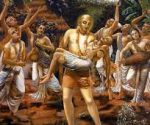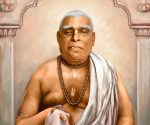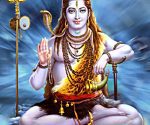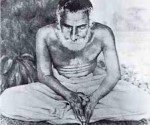18 Bullets to the Gaudiya’s Hegemony
May 21, 2013 (VNN) by Radhakrsnadasa Brahmacari (GKG) of ISKCON
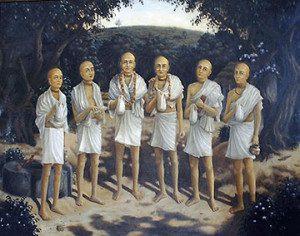 The 15+1+2 Unique Aspects making Gaudiya Lineage the Cynosure of all Religionists’ Eyes
The 15+1+2 Unique Aspects making Gaudiya Lineage the Cynosure of all Religionists’ Eyes
The six Gosvamis of Vrindavana are considered the originally actual theological inventors of the Gaudiya siddhanta. But, the internal reason why so is to be believed is presented in our present essay.
Srila Baladeva Vidyabhushanapada again took diksha into the Gaudiya line solely for being introduced to the path of raganuga-bhakti and its concomitant i.e. unnata-ujjvala-rasa alias parakiya-manjari-bhava – yes. Because, the raganuga-bhakti cannot be had through the pure Madhva line. Their acaryas are not followers of raganuga and/or ragatmika-bhakti. Had Madhvacharya been an exponent of raganuga-bhakti, (what to speak of unnata-ujjvala-rasa i.e. a very advanced category of raga-bhakti), Srila Krishnadas Kaviraja Gosvami would not have proclaimed in his CC Adi Lila chapters dealing with the Chaitanya Tree and its branches – that Madhvaendra Puri was representing the seed of ragatmika-bhakti which illustrated itself full-fledged in Mahaprabhu. If Madhvacharya and his disciples up to Laxmipati Tirtha were raganuga and/or ragatmika-bhaktas, this would not have been said. This is just a small indication. This was the reason why Baladeva Vidyabhushan again took initiation into Gaudiya line from Pandit Radhadamodardas of Kanyakubja Brahmin ethnicity.
Also, Baladeva did not take initiation again into Gaudiya line because he felt that Madhva sampradaya is unauthentic. Had it been so, he would not have extolled Madhvacharya from time to time in his later writings like Prameya Ratnavali and Siddhanta Ratnam alias Govinda-bhashya-peethakam. But due to those 16 “core theological aspects” which are purely philosophical in nature, he reinitiated himself formally. In short those 16 unprecedented aspects are:
1. The unique conception of the svayam-bhavatatta (i.e. primeval Godhood) of Vrajendranandan Sri Krishna.
2. The morphological bias for Srimati Radharani even on top of Sri Krishnacandra (this includes Srimati Radharani’s being the dearmost of Krsna, the interwoven analogous status of Radhakunda, and the combined worship of the deities of Radha and Krishna for the very first time in the history of Sanatan Vedic Dharma).
3. The concept of raganuga and ragatmika-bhaktis {this includes the concepts of aisvarya (i.e. majesty), madhurya (i.e. sweetness), and audarya (i.e. munificences)} and its various sub-categories.
4. The ontological principle of acintya-bheda-abheda-vada (i.e. The scriptural conceivability or the mundane inconceivability of the distinctive and non-distinctive relationship prevalent between the principles of potent and its potencies).
5. The concept of the pre-eminence of the namasraya-bhakti (i.e. the devotional service emphasizing on the limb of the congregational chanting of the sacred names of the Lord).
6. The concept of the four types of bhagavat-sambandhi aparadhas (i.e. the offenses concerning Vaisnavas, worship of the deity, the holy realm, and the holy names).
7. The rasa-tattva (i.e. principle of transcendentally devotional mellows).
8. The pre-eminence of prema as the pancama-purushartha which supersedes the previous four namely dharma, artha, etc.
9. The svyam-bhagavatta of Lord Caitanya Mahaprabhu and that CM is the self-same as the svyam-rupa svayam-bhagavan Govindadeva.
10. The concept of the abhasa stages or the stages representing semblance of their actual counterparts e.g. nama-abhasa, rati-abhasa, bhakti-abhasa, aparadha-abhasa, and rasa-abhasa etc.
11. The technical division of the stages of svarupa-siddha uttama- bhakti into 16 types as well as description of various types of misra-bhaktis and other variants like the aropa-siddha, sanga-siddha etc. Also the pre-eminence of the bhakti-patha on top of all other paths of spirituality like karma, jnana, yoga, etc.
12. The practical, scientific, and graphical processes of initially developing the subtle transcendental body and later the gross transcendental body (siddha-deha and parshada-deha; check BRS verse “seva sadhaka-rupena siddha-rupena catra hi..” and the Priti-Sandarbha wherein the graphically detailed description of the dormant parshada-deha is given).
13. Unnata-ujjvala-rasa or ‘bhavollasa-rati’ i.e. the precisely specific love that cowherd maidens of the manjari (maidservant) type have. The uniqueness cum unprecedented nature of bhavollasa-rati is that all other types of sthayi-ratis in all of the 5 types of mukhya-rasas or primary mellows have Krsna as their objective or the ‘visayalambana-vibhava’. Whereas, only this ‘bhavollasa-rati’ has Srimati Radhika as the sole ‘visayalambana-vibhava’. All other types of sthayi-ratis have the potent principle i.e. Krsna as their objective; whereas, ‘bhavollasa-rati’ or ‘manjari-bhava’ of nitya and prana-sakhis of Radhika’s denomination have Vrsabhanunandini i.e. the hladini potency as the sole primary objective while Krsna as a secondary assistant objective of it (i.e. of ‘bhavaollasa-rati’).
14. The concept of the ‘upapati-parodha-jara-bhava’ alias the ‘parakiya-bhava’ referring to the extra-marital paramour conjugal relationship of samartha-rati type which underlies all the conjugal sub-relationships in the Vrajalila. This also includes the unique Gaudiya concept that the most confidential madhurya-mayi-lilas or the pastimes wholly permeated with sweetness and devoid of the moods of awe, reverence, and majesty – only exist in the parkata-lila of the aprakrta-bhauma-vrindavana-prakasa or the manifest pastimes of the transcendental Vrndavana Dhama manifested within the mundane skies.
15. The par-excellence of Srimad Bhagavatam on top of the outdated conception of prasthana-trayi inclusive of smarta-prasthana (i.e. Bhagavad-gita), srauta-prasthana (Upanisads), and the nyaya-prathana (i.e. Brahma-sutras). Also, the distinction between the Vallabhacarya’s new concept of prasthana-catustayi (inclusive of samadhi-bhasa-prasthana which is Srimad Bhagavatam) and the Gaudiya’s conception of the sole paramount authenticity of SB only with all other scriptural canon as subservient to it (i.e. to SB).
Besides these 15 theologically kernel aspects, there is one other aspect that is also essentially theological but more dealing with the process of implementation/application.
16. The analysis on the phalgu-vairagya (dry renunciation) and the two fold yukta-vairagya (renunciation endowed with devotion in which one type is for the grihasthas and other for the renounced saints) as depicted in the BRS, and the vastavika-dainya (the actual internal humility) of four types as described in the 3rd verse of the CM’s Siksastakam. This concept of yukta-vairagya and the dainya are based on a scientific, rational and scriptural grounds and is totally devoid of any blind sentimentalism.
Note: Among these 16 aspects, the ninth aspect is the mula-pramana (primeval evidence), whereas the 15th aspect is the avantara-pramana (i.e. secondary evidence). Why? Because, without the knowledge of the primeval Godhood of CM, the conception of the par-excellent authority of SB also remains unknown (refer to the famous “aradhyo bhagavan vrajesa-tanayah……..” etc. verse of Srinatha Cakravartipada in the beginning of his Caitanya-mata-manjusa commentary on SB). Rest 14 are its prameyas (truths ascertained on evidence). These unique and unprecedented theological presents (i.e. gifts) beginning with ‘unnata-ujjvala-rasa’ – are unfathomable and unattainable without the existence of the 9th and the 15th testimonial aspects. Refer to the celebrated ‘anarpita carim cirat…….” etc. verse of Vidagdha Matha Nataka of Sri Rupa Gosvami and the CC 1.1.4.
Clarification: When Sri Viatthalesa Gosvami (the son of Vallabhacarya – the founder of Pustimarga sect) indicates manajari-bhava (a unique aspect of Gaudiya Vaisnavism) in his famous Radha-prarthana in the following words: “……….sva-priya-carana-kinkarim kuru……” translated as: “……..Oh Syamasundara! Kindly make me the maidservant of Your own beloved Srimati Radhika…..” – it should be noted that though Vallabhacarya and his son founded a new sect, still their Gaudiya connection and its resultant impact on them had not vanished. Kindly refer to the chapter in the Antya-lila of CC wherein it is described that Vallabhacarya got initiated into kisora-gopala-mantra and kama-gayatri by Gadadhara Pandit Gosvami upon the instructions of CM. So, the manjari-bhava seen indicated in the writings of Vallabha and his son – certainly is a derivation from the Gaudiya line because they were originally Gaudiyas.
The last two contributions listed below are not the quintessential aspects and are found by later acaryas. However, they are also very beneficial to the growth and sustenance of the Sampradaya. Let us analyze them too.
The 17th and 18th unique contributions given to the Gaudiya Sampradaya by latter acaryas like SBSST, BVT, and SP are –
17. The concept of daiva-varnashrama-dharma (the transcendental eightfold structure of social occupation and the stages of life).
18. The concept of brihat-mridanga (i.e. the Great Drum resembling the printing press and the resultant book distribution).
But, since these concepts are not the integral parts of the Gaudiya theology and because these contributions are more related to the social structure of devotional life and to the ways of propagating the philosophy of sampradaya , these concepts are not vital for the existential identity and peculiarity of the Gaudiya lineage.
Including or excluding daiva-varnasrama will not make any philosophical instability in the Gaudiya line and will not hurt its theological peculiarity from other sampradayas. Likewise, including or excluding brihat-mridanga concept will also not hurt the fundamental theological features of the Gaudiya lineage and will not either create or destroy the theological peculiarity of Gaudiya line from other lines. Though they certainly can create the social instability within the Sampradaya.
The concept of daiva-varnasrama may be a patent of post-SBSST gaudiya line till now, but even if other vaisnava sampradayas incorporate this concept, it won’t create any harm to the basic theological beliefs of those sampradayas.
The concept of brihat-mridanga or wide-scale preaching through printing books – this concept may be patent of post-SBSST gaudiya line, but if it is accepted by other vaisnava sampradayas, their core theological peculiarity won’t get hurt.
But, if the formerly mentioned first 15 unique and purely theological concepts are taken out, then the whole sampradaya will collapse and without retaining its peculiarity, it won’t be able to differentiate itself from other vaishnava sampradayas. Can we imagine the concept of raganuga-bhakti or acintya-bheda-abheda-vada taken out and still the Gaudiya sampradaya survives! Impossible! On the other hand, if the 17th and 18th unique concepts (though these concepts are unprecedented in other sampradayas till now) of Gaudiya line provided by latter acaryas are taken out, still the Gaudiya line can retain its theological peculiarity without any compromise and with distinction from other sampradayas. If not so, Gaudiya Sampradaya would not have existed as a distinct sampradaya before SBSST and BVT’s unique 15th and 16th contributions. But we see that Mahaprabhu’s line existed in a pure form even before these acaryas though there were intermittent disruptions in between as they are felt in contemporaneous times too. Also, if our 15 concepts are imported into by the other sampradayas, their core theological beliefs will get hurt. Can we imagine the Ramanuja Sampradaya accepting the concept of the svayam-bhagavatta of Krsna and still be able to survive! Impossible!
Final conclusion: SB 1.1.2 & 1.1.3 specifically show that only a ‘rasika’ and a ‘bhavuka’ bhakta who is devoid of all ‘kaitava-dharma’ or cheating propensities like the desires for ‘dharma’, ‘artha’, ‘kama’, and ‘moksa’ – is qualified to understand SB. He should also be devoid of jealousy. Jnanis and karmis have hidden jealousy towards the Lord and are not devoid of the four mundane desires. A true ‘rasika’ and a ‘bhavuka’ can only be the follower of CM and the Gaudiya lineage because it was only Srila Rupa Gosvami Prabhupada, who, for the very first time in the literary history of Sanatana Vedic Dharma, scientifically established the ‘rasatva’ or the ‘mellowness’ of the bhakti-yoga. No other acarya prior to Sri Rupa was able to show it. Refer to the 2nd invocation verse of the 1st Chapter of Madhurya Kadambini of VCT.




